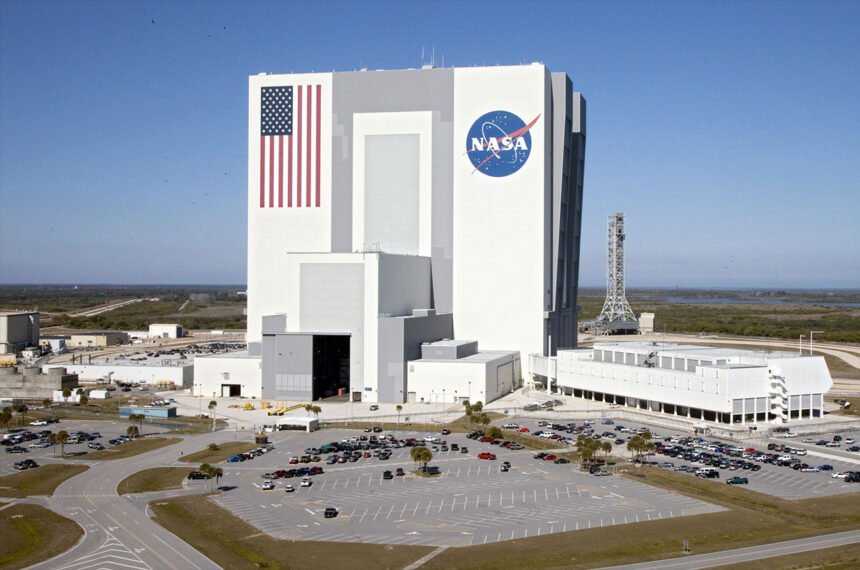The National Aeronautics and Space Administration,NASA is an independent agency of the U.S. federal government responsible for the civil space program, aeronautics research, and space research.
NASA, an acronym known worldwide, represents a remarkable organization that has played a pivotal role in humanity’s quest to explore the cosmos. While many are familiar with its abbreviation, the full form of NASA and its rich history might not be as well-known. In this article, we will delve into the origins and achievements of NASA, shedding light on its remarkable journey.
NASA – The Full Form

NASA stands for the National Aeronautics and Space Administration. This federal agency was established on July 29, 1958, by the National Aeronautics and Space Act, signed into law by President Dwight D. Eisenhower. Its creation marked the beginning of an era of exploration that would take humans beyond Earth’s boundaries and into the vast expanse of space.
The Birth of NASA
NASA’s establishment came in response to the Cold War rivalry between the United States and the Soviet Union, commonly referred to as the Space Race. The Soviet Union had achieved significant milestones in space exploration, including launching the first artificial satellite, Sputnik, in 1957, and sending the first human, Yuri Gagarin, into space in 1961. The United States realized the need to catch up and surpass the Soviets in space technology and exploration.
SPACE ORG.was formed by merging the National Advisory Committee for Aeronautics (NACA) with various other research and development organizations. NACA had been in operation since 1915 and had a wealth of expertise in aeronautics and aerospace research. With its combination of resources, It was poised to lead the United States into the space age.

NASA’s Achievements
Since its inception, it has achieved numerous milestones and made significant contributions to our understanding of space and the universe. Some of its most notable achievements include:
- Apollo Program: NASA’s Apollo program, which ran from 1961 to 1972, culminated in the historic Apollo 11 mission in 1969, when astronauts Neil Armstrong and Buzz Aldrin became the first humans to set foot on the Moon.
- Space Shuttle Program: The Space Shuttle program, active from 1981 to 2011, allowed for the routine transportation of astronauts and cargo to and from space. The Space Shuttle fleet conducted a wide range of missions, including deploying and servicing satellites, conducting scientific research, and constructing the International Space Station (ISS).
- Hubble Space Telescope: Launched in 1990, the Hubble Space Telescope has provided breathtaking images and valuable scientific data about the universe, revolutionizing our understanding of galaxies, stars, and the cosmos.
- Mars Exploration: NASA has sent a series of robotic missions to Mars, including rovers like Spirit, Opportunity, Curiosity, and Perseverance, to study the planet’s geology, climate, and potential for past or present life.
- International Space Station (ISS): it has been a key partner in the construction and operation of the ISS, a space laboratory where astronauts from around the world conduct experiments in microgravity
- As we move further into the 21st century, NASA’s mission continues to evolve and expand. The agency’s objectives include not only exploring our solar system but also preparing for human missions to Mars and beyond. Here are some key initiatives and projects that represent the future of NASA:
- Artemis Program: NASA’s Artemis program is a bold initiative aimed at returning humans to the Moon by the mid-2020s, including the first woman and the next man. The Artemis missions will not only build upon the knowledge gained during the Apollo program but also serve as a stepping stone for future deep-space exploration.
- James Webb Space Telescope (JWST): Set to launch in the near future, the JWST is the successor to the Hubble Space Telescope. It will be the most powerful space telescope ever built and will provide unparalleled insights into the early universe, distant galaxies, and the formation of stars and planetary systems.
- Commercial Space Partnerships: NASA is increasingly collaborating with private companies, such as SpaceX and Boeing, to develop new spacecraft and launch systems. These partnerships aim to reduce the cost of space travel and open up new opportunities for exploration.
- Planetary Missions: NASA continues to explore our solar system with missions to study planets, moons, and asteroids. Upcoming missions include the Europa Clipper, which will investigate Jupiter’s moon Europa, and the Dragonfly mission, which will send a rotorcraft to explore Saturn’s moon Titan.
- Earth Science: NASA plays a crucial role in monitoring and understanding our home planet. Its Earth-observing satellites provide data on climate change, weather patterns, and environmental changes, helping scientists and policymakers make informed decisions.
- International Collaboration: NASA collaborates with space agencies from around the world on a variety of missions. The International Space Station, a symbol of international cooperation in space, continues to serve as a platform for scientific research and international partnership.
- Space Technology: NASA invests in cutting-edge space technologies that have applications not only in space exploration but also in everyday life on Earth. These innovations include advancements in propulsion, robotics, and materials science
Conclusion

NASA, with its full form as the National Aeronautics and Space Administration, has been at the forefront of space exploration for over six decades. From landing on the Moon to sending robotic explorers to distant planets, NASA’s contributions to science and our understanding of the universe are immeasurable. As we look toward the future, NASA continues to push the boundaries of what is possible in space exploration, inspiring generations to dream of the stars and beyond.
Also Read: Doodle 4 Google: Celebrating Creativity And Innovation




































